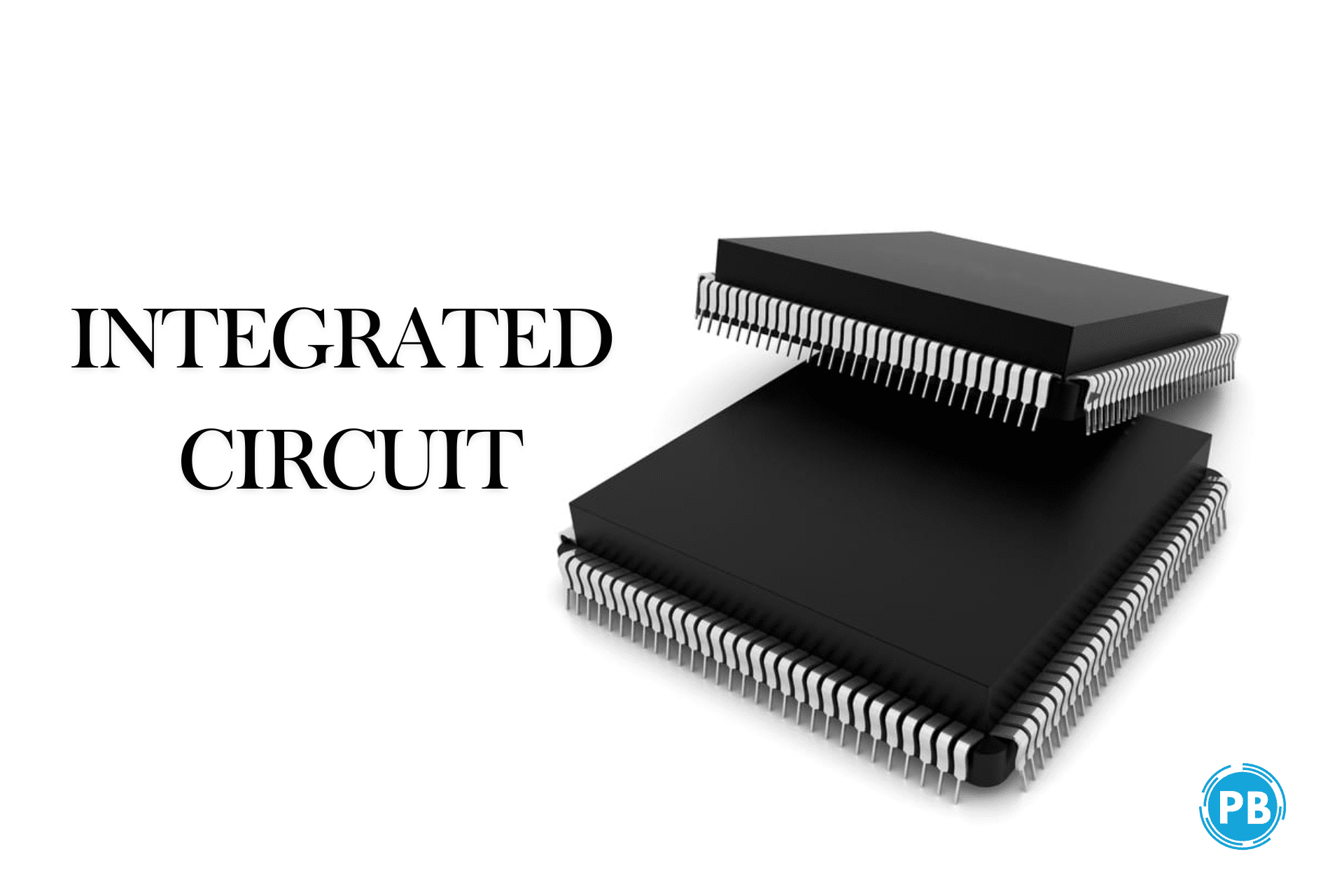
Integrated Circuit
What we are going learn from this blog?
i) What is an integrated circuit?
ii) what are the classifications of integrated circuits?
ii) What are the classifications of ICs based on fabrication techniques?
Introduction Of Integrated Circuit
In a T.V. circuit or a computer circuit, there are hundreds of components to be used, so they occupy large space or there is a problem of reliability as hundreds of components are to be soldered. To meet the problem of space conservation and reliability, a new branch of electronics known as microelectronics was developed in the late 1950s. The micro-electronics deals with micro-circuits. One type of such circuit is an integrated circuit, generally abbreviated as IC.
An integrated circuit is one in which the active components (e.g. transistors, diodes, etc.) and passive components (e.g. resistors, capacitors, etc.) are automatic parts of a small semiconductor chip.
The active and passive elements are formed and connected within a small chip of semiconductor material. As the components are formed within the chip, no component can be seen to project above the surface of the chip.
Moreover, the individual components cannot be removed or replaced. Generally, there is no standard symbol for ICs. ICs are represented by al either a triangle or a rectangle with numbered terminals as shown in Fig.

Classification of ICs based on Chip Size -
ICs are classified according to the number of components (or gates in the case of digital ICs) integrated on the same chip, these are as follows -
(i) Small Scale Integration (SSI) - In this case, the number of circuits contained in one package is less than 30 (and the number of components is less than 50).
(ii) Medium Scale Integration (MSI) - In this case, the number of circuits contained in one package is between 30 and 100 (and several components is between 50 to 500).
(iii) Large Scale Integration (LSI) - In this case, the number of circuits is between 100 and 100000 (and the number of components is between 500 to 300000).
(iv) Very Large Scale Integration (VLSI)- In this case, the number of circuits contained per package is greater than 100000.
Classification of ICs based on Fabrication Techniques -
The ICs can be classified into the following three classes on the basis of the fabrication techniques used -
(i) Monolithic ICs
(ii) Thin and thick film ICs
(iii) Hybrid or multi-chip ICs.
(i) Monolithic ICs - The term monolithic is derived from a combination of Greek words 'monos', meaning single, and 'lithos' meaning stone, which in combination result in a single-stone or more appropriately, single solid structure. In monolithic IC, the active and passive elements and their interconnections are formed upon or within a single silicon crystalline material. A part of a silicon wafer containing an integrated circuit is called a chip.
Monolithic ICs are the most common type used in practice.

ii) Thin and Thick Film IC - These ICs are smaller than discrete circuit circuits but larger than monolithic ICs. The passive components like resistors and capacitors are integrated with a thin or thick comp, but diodes and transistors are connected as discrete components to form a complete circuit Hence, a commercial combination of integrated and discrete components is known as thin and thick film circuits.
Thin film ICs are fabricated by depositing films of conducting material on the surface of a glass or ceramic base. In thick film ICs manufacturing process silk screen printing techniques are used to create the desired circuit pattern on a ceramic substrate. Thick and thin film ICs have similar appearance, properties, and characteristics.
The essential difference between the thick and thin film ICs is not their relative thickness but the method of film deposition.
(iii) Hybrid or Multi-chip ICs - When an IC consists of several monolithic ICs, then the combination is known as a hybrid IC. In this IC, the components are mounted on a ceramic substrate and interconnected by wires or a metalization pattern.
From a functional standpoint, the IC can be divided into the following two classes-
(i) Linear IC (ii) Digital IC.
(i) Linear IC- When the input and output relationship of a circuit is linear, linear ICs are used. So linear ICs are used in amplifiers, oscillators, etc.
(ii) Digital IC- When the circuit is either in an ON state or OFF state and not in between the two, the circuit is known as a digital circuit. ICs used for these circuits are known as digital ICs. So digital ICs find wide applications in computers and logic circuits.
Conclusion
In this blog we read introductions of integrated circuits, the classifications of integrated circuits, and the Classification of ICs based on fabrication techniques of integrated circuits.
Do you dream of turning your thoughts and words into income ? join us now and become blogger now.

0 Comments
Leave a Comment